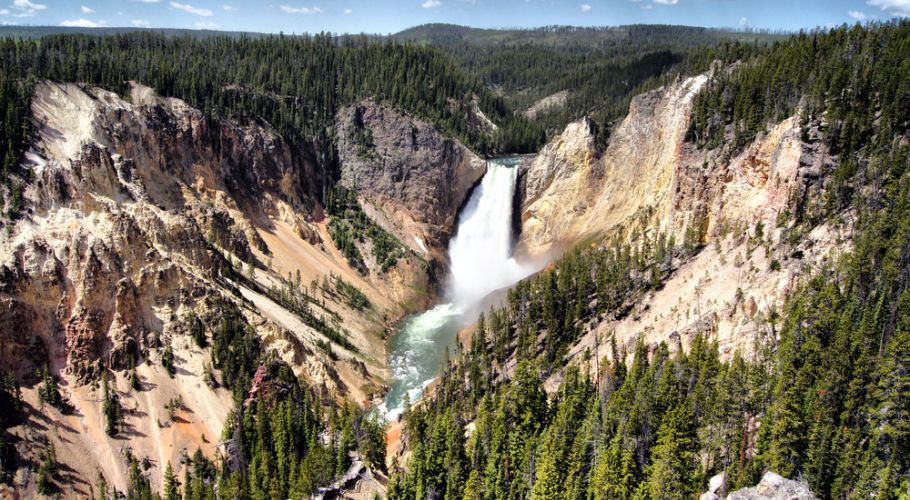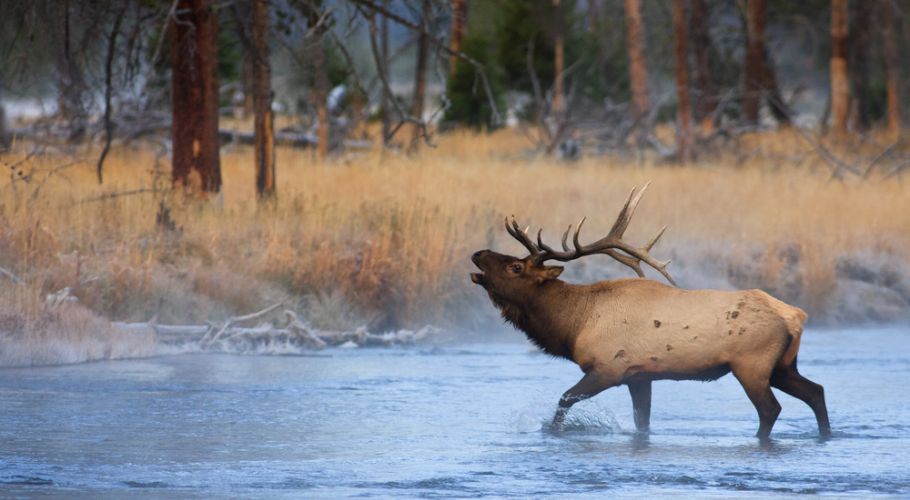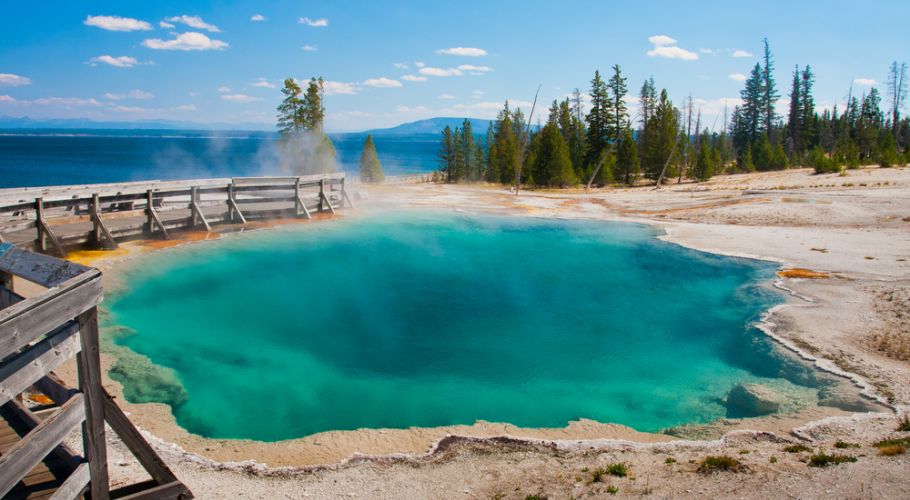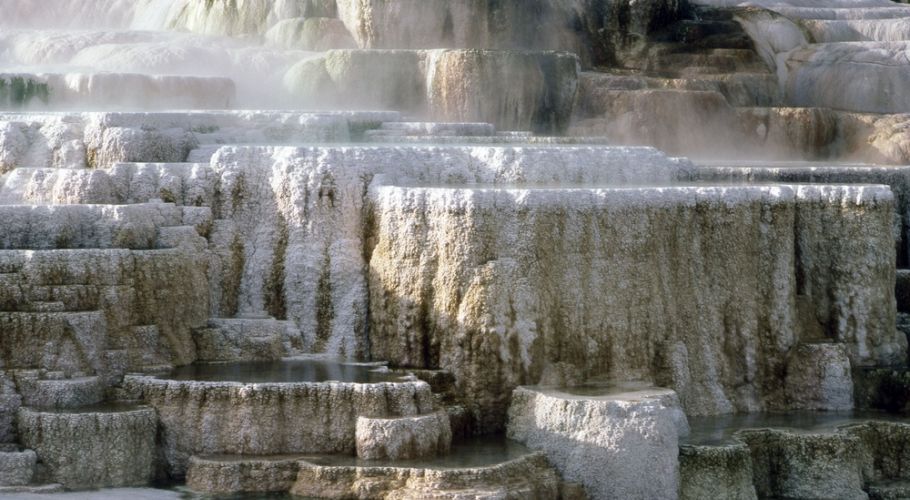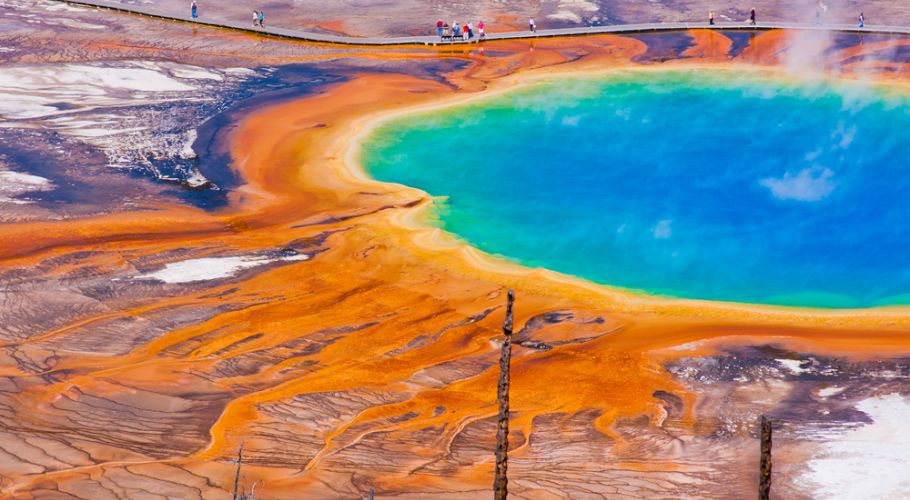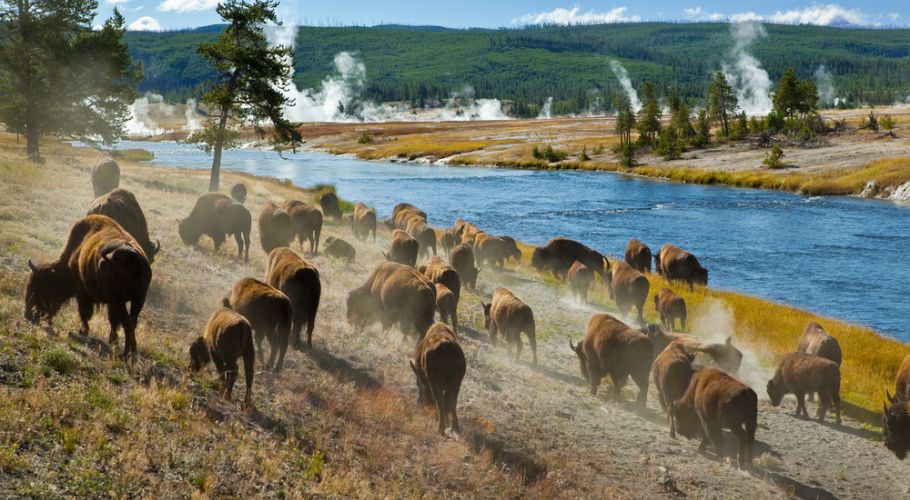Yellowstone National Park is located primarily in Wyoming with small portions of the park extending into Montana and Idaho. The national park is comprised of lakes, rivers, canyons, mountains, and a variety of geothermal features.
Experts in conservation and nature from around the world including members of the International Union for the Conservation of Nature voted on the natural wonders of North America. On February 26, 2014 following the conclusion of the voting, Yellowstone National Park was declared one of the Seven Natural Wonders of North America.
You are invited to discover and explore Yellowstone National Park and learn what makes it one of North America’s Seven Wonders of Nature.
What makes Yellowstone National Park a natural wonder?
Statistically speaking, Yellowstone National Park sits on the largest super volcano in North America extending 34 x 45 miles (55 by 72 km) across. It was the first national park established in the world in 1872 serving as the catalyst and model for the now globally practiced national park protective system. The park extends across 3, 468 square miles (8,983 sq km) making it one of the largest national parks in North America. Furthermore, Yellowstone Lake reaches a depth of 400 feet (120 m) and extends across 110 miles (180 km) while sitting at an elevation of 7,733 feet (2,357 feet) making it the largest high altitude lake in North America.
Yellowstone National Park represents one of the most diverse ecosystems in North America. Within the park boundaries there are canyons, rivers, lakes, mountains, sub-alpine forests and 290 different waterfalls. However the park is most notably recognized for the abundance and variety of geothermal features including hot springs, mud pots, fumaroles, travertine terraces and of course geysers with Old Faithful being the most famous. The park features one of the world’s largest petrified forests.
Yellowstone National Park is home to hundreds of species of mammals, reptiles, fish and birds. Some of the more notable include grizzly bears, wolves, elk, moose, mountain goats, bighorn sheep, mountain lion and buffalo (bison). The Yellowstone herd of buffalo is the largest and oldest public bison herd in North America.
What are the best ways to see and experience Yellowstone National Park?
The easiest way to experience the majority of Yellowstone National Park is to travel the figure eight loop that meanders through the park providing visitors with access to the majority of iconic geothermal features and amazing scenery that the park offers.
However the best way to experience Yellowstone National Park is by getting out of the car or motor home and hiking the various trails. The trails around the geothermal features are usually boarded walkways providing easy access for clear views of the amazing wonders within this natural wonder. Hiking throughout Yellowstone National Park allows travelers to experience the 290 waterfalls, breathe the fresh air, listen to the wind through the sub-alpine forests, and really engage all that Yellowstone has to offer.
If you see a line of parked cars on the side of the road take note, more than likely the visitors are watching elk, bear, wolves or buffalo. These cars help you find wildlife, but they also create havoc for trying to navigate the roads.
When is the best time to visit Yellowstone National Park?
The summer months of June through September is considered high season when the majority of visitors travel to Yellowstone National Park. The temperatures are comfortable for getting out and enjoying a hike on the trails or boardwalks. The drawback is that the park during these months is crowded with July receiving over 900,000 visitors in the month alone.
Another ideal time to come is late September through October to witness the arrival of the fall colors.
What is Yellowstone National Park weather like?
Yellowstone National Park weather varies throughout the year. The summer months of June through September typically sees the high temperatures ranging from 70 to 80oF (21 to 27oC) during the day and evening temperatures ranging dropping close to freezing. The Spring and Fall temperatures are cooler with temperatures ranging from 30 to 60oF(-1 to 16oC).
The summer months can easily experience afternoon rains or thunderstorms, but these usually clear out fairly fast. A nice thunderstorm with lightning across the Yellowstone caldera and surrounding mountains can make for a picturesque scene. The winter months bring snow and temperatures below freezing throughout the day.
Photography Tips for capturing Yellowstone National Park
Photographers should plan for a variety of lenses when capturing the variety of photographic opportunities Yellowstone provides. A telephoto or zoom lens is a necessity for capturing wildlife and bringing some of the various falls closer at different view points.
If you are a photographer and you have tips or insights for capturing images at Yellowstone National Park, please submit them to Seven Wonders through the Contact page.
